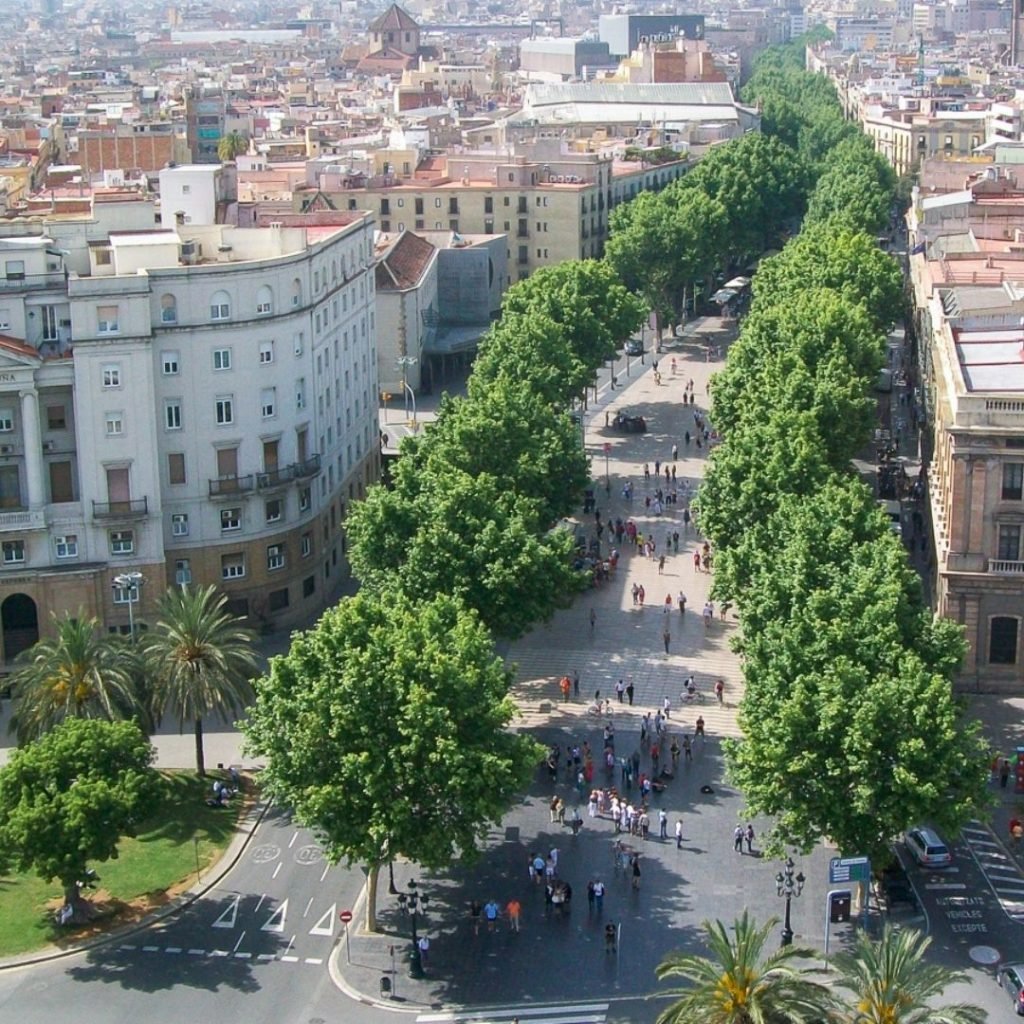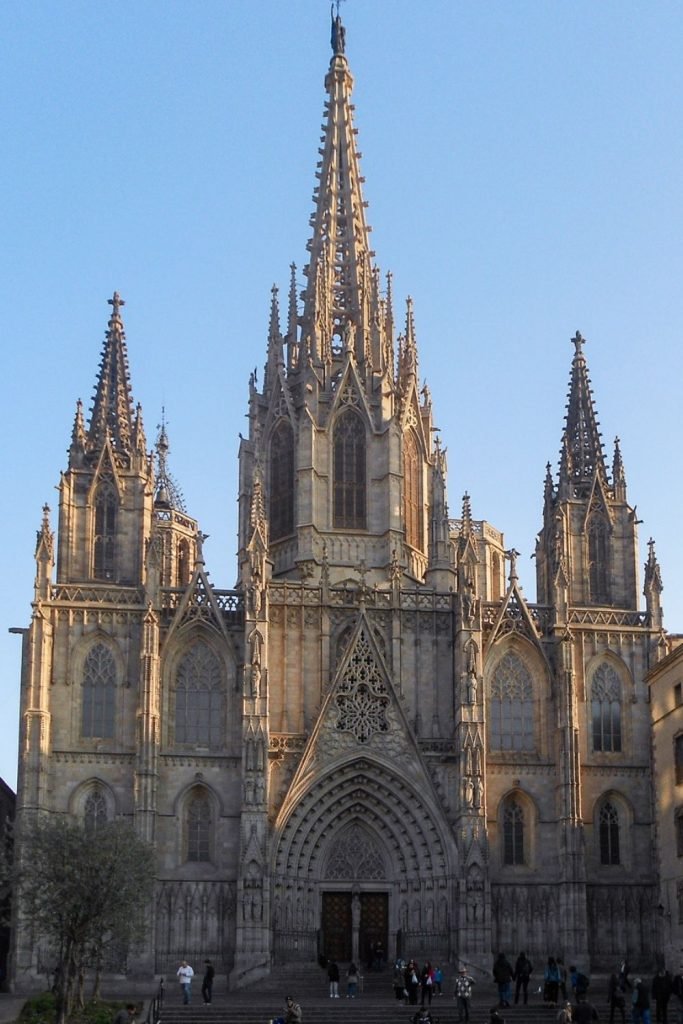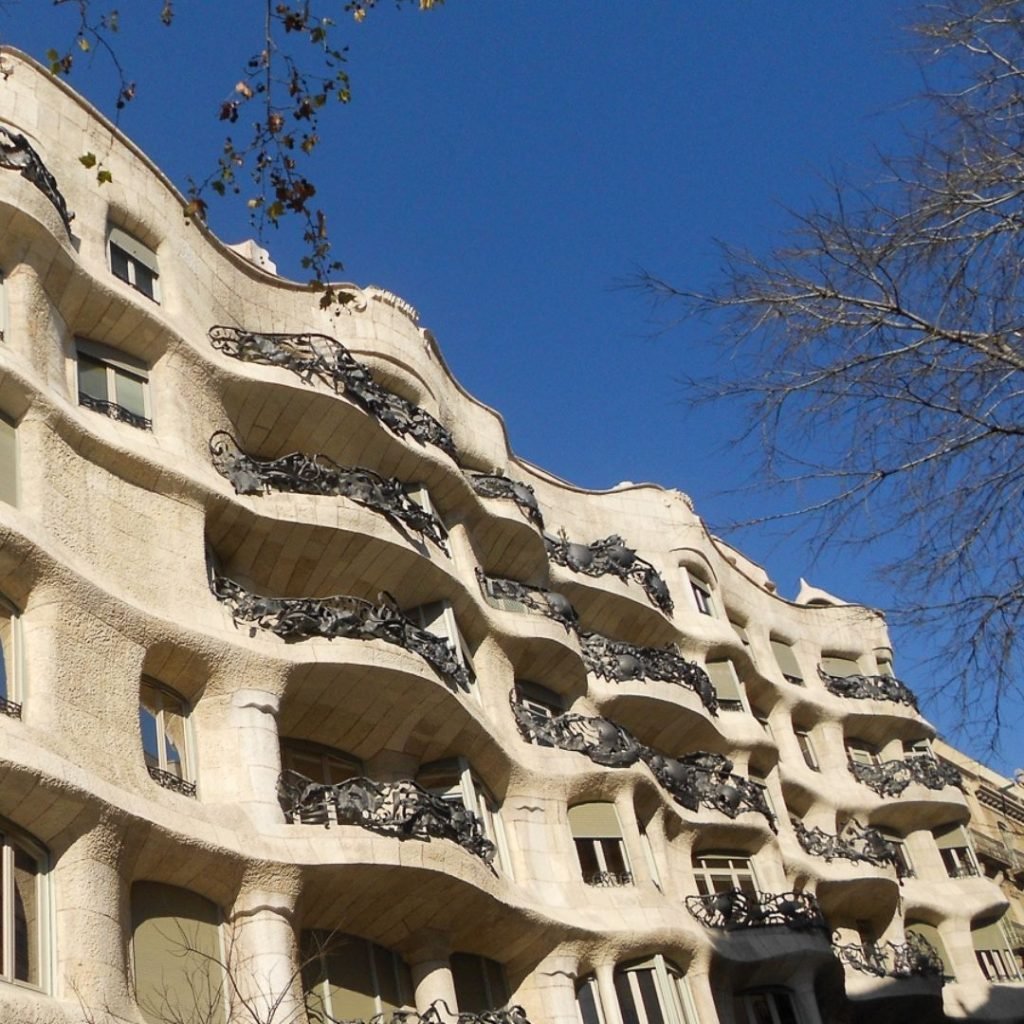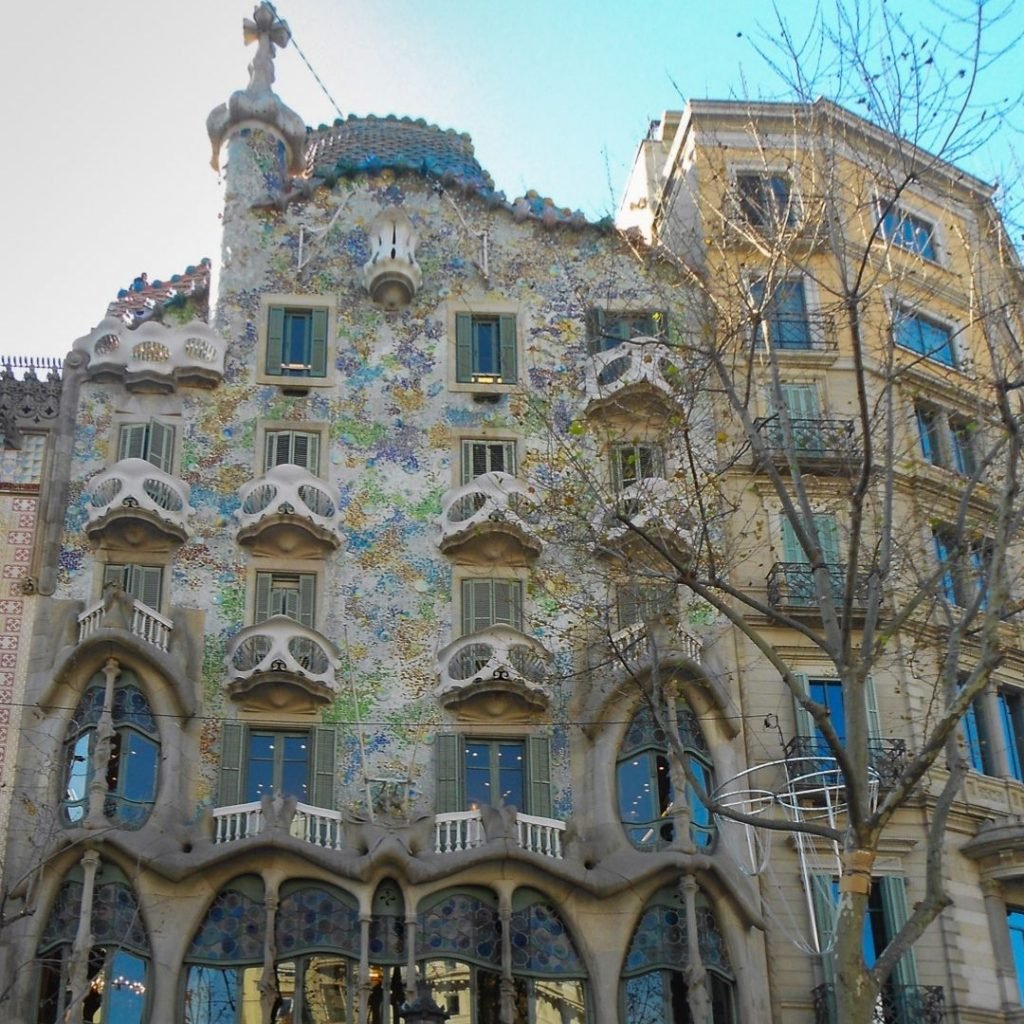Barcelona Travel Guide: Introduction
Planning a trip to Barcelona? This Barcelona travel guide has everything you need to explore the Catalan capital. From stunning architecture to vibrant neighborhoods, we’ll help you make the most of your visit.
Thanks to its unique architecture, cosmopolitan charm, and mild weather, Barcelona is perfect for all ages, all year round. Even if you’re not an architecture buff, you’ll love admiring the city’s iconic buildings. Plus, with lively nightlife, sandy beaches, and incredible food, there’s always something to enjoy. Once you visit, you’ll likely want to come back again and again.
Affiliate disclosure: This article contains affiliate links. If you choose to make a purchase through them, we may earn a small commission at no additional cost to you. These commissions help us continue creating helpful travel guides, tips, and inspiration. Thank you for your support!
Where is Barcelona Located?
Barcelona sits in northeastern Spain on the Mediterranean coast, about 150 km (90 miles) south of the French border. Its strategic location makes its port one of the busiest in Europe. Similarly, its proximity to France allows many French tourists to enjoy quick getaways.
For the rest of us, though, arriving in Barcelona usually means taking to the skies.
Find Flights to Barcelona
How to Get to Barcelona
From Barcelona Airport to the city center
El Prat, Spain’s second-largest airport and Catalonia’s main hub, is located just 12 km southwest of Barcelona. While it primarily handles intercontinental flights, it also serves domestic and European routes. Despite its size, the airport’s two terminals make navigation straightforward.
Metro
Metro L9 SUD connects the airport to the city, ending at Zona Universitaria. The journey takes about 32 minutes, with trains every 7 minutes. The metro station is at T1, level 0, near the buses. Operating hours are 5 am–midnight (Sun-Thu) and until 2 am on Fridays, Saturdays, and public holidays.
Train
The R2 NORTE train departs from T2 every 30 minutes, with the station accessible via a covered footbridge. If you land at T1, a free 24-hour shuttle bus connects to T2. Trains run from 5:42 am to 11:38 pm.
Bus
The Aerobus departs from T1, passes through T2, and stops at Plaza Catalunya. It also makes three intermediate stops: Plaza de Espanya, Urgell, and Plaza Universidad.
From Girona Airport to the city center
Girona-Costa Brava Airport is 85 km from Barcelona. The Sagalés Bus connects the airport with the city, departing 20-25 minutes after each flight. The journey takes about 75 minutes, with the final stop at Estació del Nord. From there, the city center is just a 15-minute walk.
Search all available transport options below
Transfers
For comfort, transfers in Barcelona are fast and efficient, so you won’t need to wait for buses or connections—getting around is easy.
If you plan to explore other parts of Spain, renting a car in Barcelona is your best option.
Barcelona Travel Guide
Where to Stay in Barcelona
Here is our selection of Barcelona’s best neighborhoods:
1) Barri Gòtic
Barri Gòtic is centrally located, perfect for those wanting to save on transport. You can easily walk to major landmarks like the Catedral de Barcelona, Museo Picasso, and Palau de la Música.
PROS: The old town is charming and full of things to do. Plaza Catalunya, a key connection to the airports, is just 10 minutes on foot. There’s a wide variety of accommodation to suit all preferences.
CONS: It’s a very touristy area, so not ideal for those seeking tranquility.
Discover the best places to stay in Barri Gotic
2) La Rambla
Staying on La Rambla puts you in the heart of the city, with everything nearby. Accommodation options range from budget-friendly hostels to more upscale hotels. It’s perfect for those who love to party and want to experience the vibrant Spanish ‘movida’.
Discover the best places to stay in La Rambla
3) Raval
El Raval has transformed from a rough area into a trendy district with art galleries, bars, and restaurants, thanks to the MACBA. It’s great for those who enjoy nightlife, with plenty of nightclubs and bars. Close to Plaza Catalunya, La Rambla, and the port, it offers more affordable hotel prices than other central areas.
Discover the best places to stay in Raval
4) Eixample
Eixample is a modern, elegant neighborhood home to iconic landmarks like La Sagrada Familia, Casa Batlló, and La Pedrera, so hotel prices can be high. Passeig de Gràcia, the city’s main shopping street, runs through it. This expansive area stretches from Plaza de Glòries to Sants station, and staying near Plaza de Glòries means you can walk to La Sagrada Familia.
Discover the best places to stay in Eixample
5) Gràcia
Stay in Gràcia for an authentic Catalan experience. Once independent until the 1800s, this village-like area is filled with artisanal boutiques and street artists, giving it a bohemian vibe. While a bit further from the city center, it’s well-connected by metro. It’s a great choice for those seeking peace and affordable B&Bs, away from the crowds.
Discover the best places to stay in Gràcia
6) Barceloneta
Barceloneta is known for its port, beaches, and lively seafront filled with shops, seafood restaurants, and “chiringuitos”—traditional beach bars. Perfect for a mix of sightseeing and beach relaxation, it’s ideal for couples and families, with attractions like the city aquarium and IMAX cinema. Just a 15-minute walk from La Rambla, accommodation can be pricey, especially in summer, but affordable options are available.
Discover the best places to stay in Barceloneta
Are you enjoying this blog post? Follow us to see the latest updates
Top Things to do in Barcelona
If you’re visiting Barcelona for the first time, you’re sure to fall in love with the city. From strolling through Park Güell to enjoying a sunset on the beach or tasting tapas near La Rambla, Barcelona has it all.
In this Barcelona travel guide, we’ll take you through everything the city has to offer, from its incredible architecture and Mediterranean cuisine to its beaches, parks, and vibrant nightlife. With its rich history, it’s easy to see why Barcelona is so captivating. Here are the top highlights you shouldn’t miss during your trip to Catalonia’s capital.
1. Las Ramblas
Las Ramblas is the heart of Barcelona. Even without a Barcelona travel guide, you’ll likely find yourself walking through this iconic street. Stretching from Plaza de Catalunya to Port Vell, it’s a bustling area full of tourists, street artists, and locals. Barcelona fans often gather here to celebrate victories or chat about football. Legend has it that drinking from the Canaletes fountain ensures your return to the city. Whether you’re enjoying street performances, people-watching from a terrace, or savoring tapas at a café, there’s always something happening on Las Ramblas.

2. La Sagrada Familia
Locals consider La Sagrada Familia the greatest achievement of Catalan architecture, though it remains unfinished. Some view the delay as a marketing strategy, while others point to the high costs. Regardless, its beauty is undeniable.
A stunning blend of Gothic and Art Nouveau styles, the façade of La Sagrada Familia depicts the life of Jesus. Gaudí’s use of vibrant colors and animal symbols like chameleons and pelicans reflects his belief that nature and divinity are intertwined. Expected to be completed in 2026 after 150 years of construction, it will be the largest religious building in Europe.
For a deeper experience, consider joining this Sagrada Familia Guided Tour.
3. Parc Güell
Parc Güell is one of Antoni Gaudí’s most unique creations, showcasing his signature Catalan Art Nouveau style. The park blends houses, fountains, pillars, and walkways seamlessly into nature. Expect lizard-shaped mosaics, archways like giant mouths, and tree-like forms that seem to wave in the wind—a surreal, almost extraterrestrial experience.
Tickets to the monumental zone start at €13. For a bit more, the Parc Güell Guided Walking Tour is a great way to learn about this World Heritage Site in under two hours. Keep in mind that the park can get crowded, with admittance limited to 400 people every 30 minutes.
GOOD TO KNOW
For true Antoni Gaudí fans, the Sagrada Familia & Parc Güell Combo Tour is a must. This 5.5-hour tour lets you explore both iconic sites with expert guidance. Highly recommended for those who want to fully experience and learn about these masterpieces.
4. Barri Gòtic
Barri Gòtic, once the heart of medieval Barcelona, is a historic district walked by Romans and Greeks. Today, it feels like an open-air museum. You’ll find everything here—from antique shops and libraries to bars, restaurants, and traditional food boutiques. During the day, stroll its narrow streets, snap photos, and enjoy an aperitif in a cozy bar. Be sure to visit the Cathedral of Barcelona, Plaça del Rei, and Plaça del Pi. By night, the district transforms with streetlights casting magical shadows, becoming the hotspot for Barcelona’s lively “movida”.

5. Casa Milà and Casa Batllò
Antoni Gaudí’s distinctive style—marked by freedom in form, color, and texture—gave Barcelona a unique architectural identity that still captivates today. Two prime examples are Casa Milà (La Pedrera) and Casa Batlló, both UNESCO World Heritage sites.
Casa Milà, Gaudí’s final civil work, is known for its stone exterior, earning the nickname “La Pedrera” (the stone quarry). Casa Batlló, located at 43 Passeig de Gràcia, was designed with complete freedom by Gaudí, thanks to the visionary client, Joseph Batlló.
Both houses are popular attractions, but you can skip the queues with Casa Milà Skip the Line Tickets and Casa Batlló Skip the Line Tickets.


6. Montjuїc Park
Montjuïc Park is a vast green space packed with museums, castles, gardens, and more. Visiting the entire park will take a full day, but you can enjoy various gardens like Laribal, the Greek Theatre Gardens, Joan Maragall, and the botanical gardens. Don’t miss the Fundació Miró (highly recommended). Other must-see spots include:
- The Magic Fountain: Light & music shows at night
- Palau Nacional: The National Museum of Catalonian Art
- Montjuïc Castle: A well-preserved Bourbon-era castle
Tip: While you can walk up from Plaça Espanya, it’s a steep climb. Instead, take bus 150, which stops at the main attractions.
Wear comfortable shoes, pack a lunch for a garden picnic, and make sure your camera is charged—the views are stunning!
7. Camp Nou
Camp Nou has been home to FC Barcelona since 1957 and is one of Europe’s football landmarks. The basic tour includes the press room, changing rooms, and museum, giving you a glimpse into the stadium’s rich history. Football fans won’t want to miss the Guided Tour of Camp Nou for an in-depth experience. Keep in mind that tours aren’t available just before or during matches, so be sure to check the schedule to avoid disappointment.
8. Taste Authentic Barcelona Food
If you’re a fan of international cuisine, Barcelona has it all—from Middle Eastern dishes to Japanese noodle bars. But being in Spain, you must try the local fare. A popular Catalan snack is Pa amb tomàquet, a rustic bruschetta topped with tomatoes and olive oil. Locals also love pintxos, stylish tapas bars serving everything from patatas bravas to croquetas and chorizo. For an authentic experience, join a Barcelona Tapas Tour—you won’t be disappointed!
Popular Tours
How to Visit Barcelona on a Budget
1) Barcelona Card
The Barcelona Card gives you unlimited access to public transport, including airport trains, along with free entry to 25 museums and attractions. You’ll also get discounts at over 40 restaurants, shops, and tours. Some of the free attractions included are:
- Museu Picasso
- Botanic Gardens
- Fundació Miró
- MACBA
- Museu de la Xocolata
2) Save on transport
The T10 metro card offers 10 rides across metros, trains, trams, and buses within Zone 1. It can be shared, so you can buy one and add more if needed. Alternatively, the Hola BCN Card provides unlimited transport within the city, but it doesn’t cover museums, attractions, or the Aerobus. This card is perfect for frequent travelers around Barcelona.
3) Eat at local markets
Eating at local markets is a great way to enjoy delicious meals without overspending. La Boqueria, a traditional market and one of Barcelona’s most visited landmarks, offers fresh ingredients and Catalan tapas. If you’re staying in an apartment, it’s a perfect spot for groceries or a quick meal. Located on La Rambla (Rambla 91), it’s open Monday-Saturday from 8 am to 8:30 pm.
Tip: Skip the first stalls with tropical fruit and venture deeper into the market, where locals shop for better prices.
4) Join a free walking tour
Walking is the best way to explore Barcelona, and a guided tour lets you discover hidden gems and fascinating facts. It’s recommended to book a free walking tour in advance. Don’t forget comfortable shoes, sunscreen, and your camera! While tipping is not required, it’s appreciated at the end of the tour.
5) Enjoy the Magic Fountain Show
The Magic Fountain of Montjuïc, a top attraction since its creation in 1929, offers a stunning light and music show. It’s a free and unique way to spend your evening in Barcelona. The fountain operates from March 1st to January 6th and is closed for maintenance from January 7th to February 28th. Shows start at 8 pm in winter and 9:30 pm in summer.
6) Explore the Roman remains of Barcino
Barcelona hides well-preserved Roman ruins, some of which are free to visit. Here are the top spots:
- Roman Towers: Plaça Nova. Remains of two defensive towers from the Porta Praetoria.
- City Wall: Carrer de la Palla, 16. The 1.4 km route starts at Plaça Nova, near the Cathedral.
- MUHBA Museum: Plaça del Rei. Free entry every Sunday after 3 pm and all day the first Sunday of the month.
- Roman Necropolis: Plaça de la Vila de Madrid. A burial site below street level.
- Temple of Augustus: Carrer del Paradís, 10. Free entry to the original remains.
- Roman Domus: Two Roman houses open for free on the first Sunday of the month from 10 am to 2 pm at Carrer de la Fruita, 2 and Carrer d’Avinyo, 15.
7) Wander around Park Güell
To access the main area with Gaudí’s masterpieces, you’ll need a ticket. However, you can explore other parts of Parc Güell for free or join a Free Walking Tour. The restricted area covers only about 5% of the park, so there’s still plenty to see without spending a cent. For a great view, hike to Turò de les Tres Creus on the southwest side!
8) Save on Roaming Charges
If you’re traveling to Spain from outside Europe, avoid expensive roaming fees by using an eSIM. As long as your phone supports it, you can buy a local data plan online before your trip—no physical SIM card required. Stay connected the easy way – Get your eSIM here.
Barcelona Travel Guide
Time for Conclusions...
Barcelona is a city everyone should visit at least once. From its quirky architecture and delicious food to the great weather and rich culture, it’s easy to fall in love. We’ve enjoyed creating this essential Barcelona Travel Guide—now it’s your turn to experience it firsthand!
If you enjoy our blog posts, follow us on Pinterest, Instagram, and Facebook. Your support help us grow and motivates us to keep improving.
Travel smart. Get insured before you go.

Thanks for sharing your useful tips 💕 I’ll definitely follow your lovely suggestions on my next trip to Barcelona 🥰 thank you guys
We’re glad you found this article useful, Francesca. Enjoy your trip 🙂